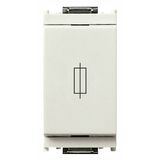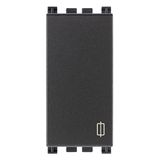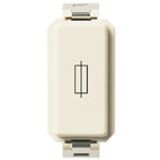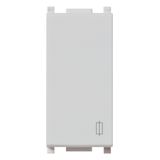Vimar Fuses











Engineers keep fuse protection in the spec when they want high breaking capacity, tight selectivity, and a device that fails safe and visible. The portfolio below maps the common DIN formats, ratings, and accessories so panel builders can place parts with no surprises at FAT.
vimar fuses range and application
General-purpose gG and motor aM cartridges cover 500–690 V AC with breaking capacities up to 80–120 kA, in 10×38, 14×51, 22×58 cylindrical and NH00…NH3 blade sizes. Typical use for vimar fuses: upstream feeder back-up for MCB/RCBOs, motor starter protection (aM with thermal overloads), PV/DC strings (gPV), and battery auxiliaries.
vimar fuse holders DIN formats and terminations
1P/2P/3P DIN holders with finger-safe IP20 fronts accept 10×38 to 22×58 cartridges; NH bases mount on DIN or plate with lift-safe covers. Terminals take 0.5…25 mm² Cu (model-dependent) at 1.2–2.5 Nm, with cage or tunnel clamps and optional blown-fuse microswitch. Crews choose vimar fuse holders where tool-less indicator inspection and padlockable covers speed LOTO.
vimar electrical protection coordination and selectivity
Use fuses upstream to limit let-through I²t so downstream breakers clear within cable and device limits. Select back-up per fault level at the board, verify energy-let-through tables, and keep discrimination with service entrance gear. Designers call up vimar electrical protection when short-circuit levels push beyond small MCB frames or when motor inrush needs aM links.
vimar modular fuse systems panel layouts and accessories
18-mm modular carriers align with DIN rows for auxiliaries, shunt trips, meters, and SPDs; bridging links and phase bars keep gutters clean. Blown-fuse indication (LED or flag), test points, and clip-on microswitches simplify diagnostics. Panel shops standardize vimar modular fuse systems so feeders, control circuits, and PV strings share the same footprint and torque rules.
vimar safety fuses critical circuits and compliance
Emergency lighting, smoke control, and fire-mode drives rely on predictable clearing with low smoke/halogen sheaths in the route. Choose ceramic bodies with high thermal class and confirm holder glow-wire (650–850 °C) where devices sit in public areas. Specifiers use vimar safety fuses to satisfy circuit integrity plans without over-sizing upstream protection.
vimar circuit protection devices stocking and procurement logic
Group parts by function: feeder back-up (NH), branch distribution (cylindrical), PV/DC (gPV 1000–1500 V DC), and control circuits (midget/10×38). Keep a single matrix listing size, class, voltage, and indicator option. Procurement tags vimar circuit protection devices to way counts and busbar kits so assembly lines aren’t hunting for the last accessory.
vimar fuse links types and ratings
gG (cable/line), aM (motor), gPV (photovoltaic), and fast-acting links for electronics are the core families. Verify power dissipation at rated current (W) against enclosure thermal limits, and check DC ratings for battery/PV use. Maintenance teams label vimar fuse links by size, class, In, and breaking capacity so night shifts swap like-for-like.
Technical specifications and standards that matter
Operating voltage: 500–690 V AC (cylindrical/NH), selected SKUs to 1000–1500 V DC for PV. Breaking capacity: up to 80–120 kA (per size/class). Temperature: −25…+55 °C typical; derate above +40 °C. Torque: 1.2–2.5 Nm (holder terminals). Terminations: 0.5…25 mm² Cu. Compliance: IEC/EN 60269 (fuses), IEC/EN 60947-3 (switch-disconnectors/fuse-switches), IEC 61215/61730 context for PV arrays; indicators and microswitches per device datasheet.
Applications and compatibility
• Floor DBs: cylindrical gG upstream of RCBO rows for energy limiting and selectivity.
• Motor panels: aM with thermal overloads; add fuse-switch for safe isolation.
• PV and DC rooms: gPV strings with 1000–1500 V DC ratings and low-watt loss; polarity-kept wiring and DC-rated holders.
• Fire-mode circuits: ceramic links in holders with visible indication; route on LSZH cabling and documented fixing centers.
All footprints fit standard DIN rails and boards, with adapters for NH bases; status contacts land on KNX/BMS via interface relays.
Integration with Vimar distribution and control
Comb busbars, shunt/UV releases, SPDs, and meters share the same modular geometry; blown-fuse contacts report to supervisors beside breaker auxiliaries. Fuse-switch units sit upstream of contactor starters so isolation and protection live in one vertical stack.
Selection criteria for B2B buyers
- Fix prospective short-circuit current at the board, then pick size/class and Icu/I²t headroom.
- Choose gG for cables/heaters, aM for motors (with overload relay), gPV for PV strings; confirm AC/DC ratings
- Lock mechanical: holder size, poles, indicator/microswitch, padlock points; verify conductor range and torque.
- Coordinate with upstream MCCB and downstream MCB/RCBO selectivity tables; check cable kA·s withstand.
- Publish labeling, spare sets per board, and IR/continuity checks in the method statement for one-pass handover.
Advantages of working with Bankoflamps
Your commissioning windows set the pace. We provide job-specific pricing, near-hour quotes by EAN/MPN, and live EU stock before boards are built. The portal shows current lead times, shipment tracking, and downloadable price lists with validity periods you can plan around. Trusted clients can use post-payment up to 30 days. We consolidate partials so holders, links, fuse-switches, busbars, auxiliaries, labels, and spares arrive board-bundled by riser. Your account manager cross-checks fault levels, selectivity tables, DC ratings, torque notes, and labeling against your drawings—keeping deliveries site-ready across France, the Baltics, Germany, Spain, Italy, Belgium, and the Netherlands.